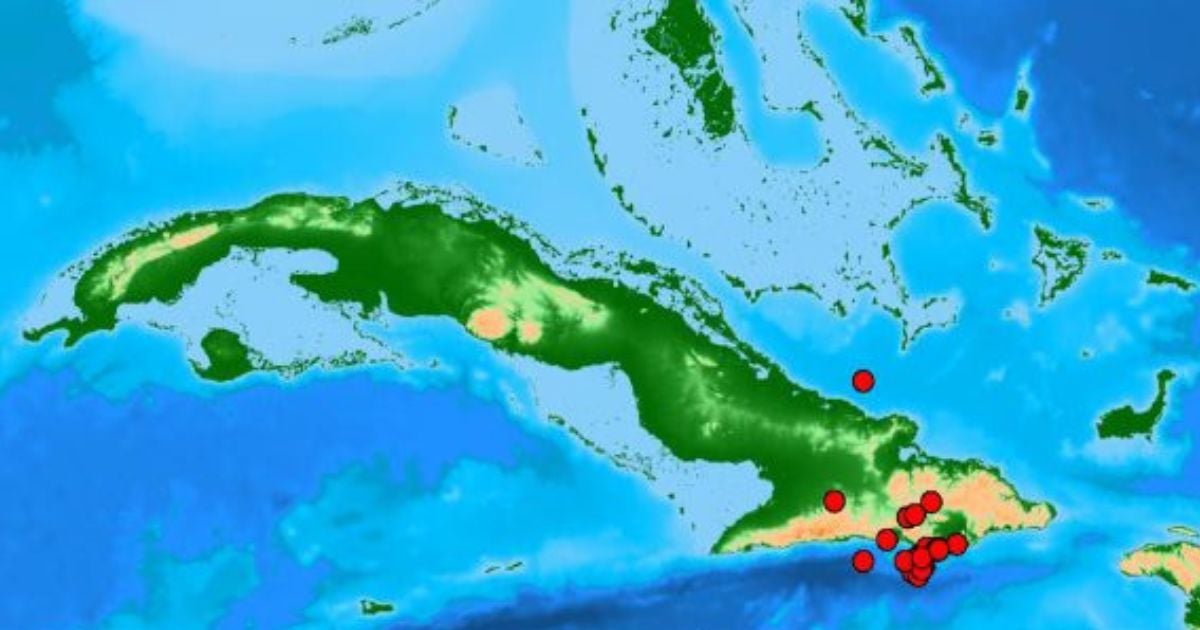At least 531 earthquakes have been registered along the Oriente Fault, situated between Guantánamo and Santiago de Cuba, following a noticeable quake on September 7, which had a revised magnitude of 4.1.
Enrique Diego Arango Arias, Head of the National Seismological Service of Cuba at the National Center for Seismological Research (CENAIS), explained on Facebook this Monday that they are closely monitoring the seismic activity in the Oriente Fault zone, located between the bays of Guantánamo and Santiago de Cuba. "For now, it is not possible to predict the future behavior of seismic activity in this zone, we can only keep observing," the expert stated, although he emphasized that the fault is "very active."
The expert pointed out this Tuesday that an additional 21 tremors have been recorded, bringing the total to 531 seismic events detected by the CENAIS monitoring network, following the 510 reported up to Monday.
Recently, Arango clarified on his social media that when multiple earthquakes occur in a short period, a common question arises: "Does this release of energy save us from a strong earthquake?"
The expert clarified: "I regret to inform you that it does not save us. The magnitude of an earthquake is measured by the energy it releases, using logarithmic scales." He elaborated, "A 3.0 magnitude quake is 32 times smaller than a 4.0, 1,000 times smaller than a 5.0, 31,000 times smaller than a 6.0, and so on."
To illustrate this principle, Arango shared a graph showing how the 7.7 magnitude earthquake that occurred on January 28, 2020, dwarfs all quakes recorded between 2010 and 2024 along the Oriente Fault, concluding, "Its energy is incomparably higher than the rest."
So far in 2024, Cuba has experienced 11 noticeable earthquakes, including the one reported on September 7. In 2023, a total of 14 noticeable earthquakes were recorded in Cuba, most of which were located in the Oriente Fault, the main zone of seismic activity in the country and a tectonic plate boundary in the southern region.
That same year, CENAIS presented a map compiling the epicenters of earthquakes detected by the Cuban seismological stations network from January 1998 to February 2024, highlighting areas with higher density and probability of seismic events in a seismically active country.
The study was analyzed on the portal of the Cuban Science Network (REDCIEN) by two local experts, Enrique Arango Arias and Manuel A. Iturralde Vinent, who noted that despite their low magnitude and limited perceptibility, these events are important to monitor, as they can cause fractures in rigid structures and, over time, lead to more serious problems.
FAQs About Recent Seismic Activity in Cuba
Given the recent surge in seismic activity along the Oriente Fault, many questions have arisen about what this means for Cuba's future. Here are some frequently asked questions and their answers.
What is causing the increased seismic activity along the Oriente Fault?
The increased seismic activity is due to the natural movements of tectonic plates along the Oriente Fault, which is a major fault line in Cuba.
Can small earthquakes prevent larger ones?
No, small earthquakes do not prevent larger ones. The magnitude of an earthquake is determined by the energy it releases, and small quakes do not significantly reduce the potential for larger seismic events.
How can residents prepare for potential earthquakes in Cuba?
Residents can prepare by securing heavy furniture, creating an emergency plan, and staying informed about seismic activity through reliable sources like CENAIS.
